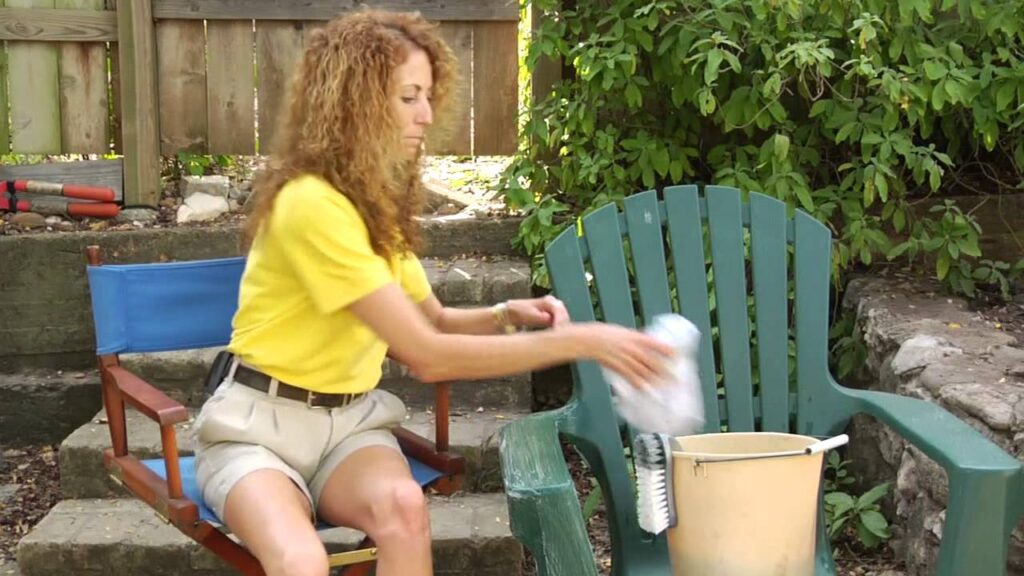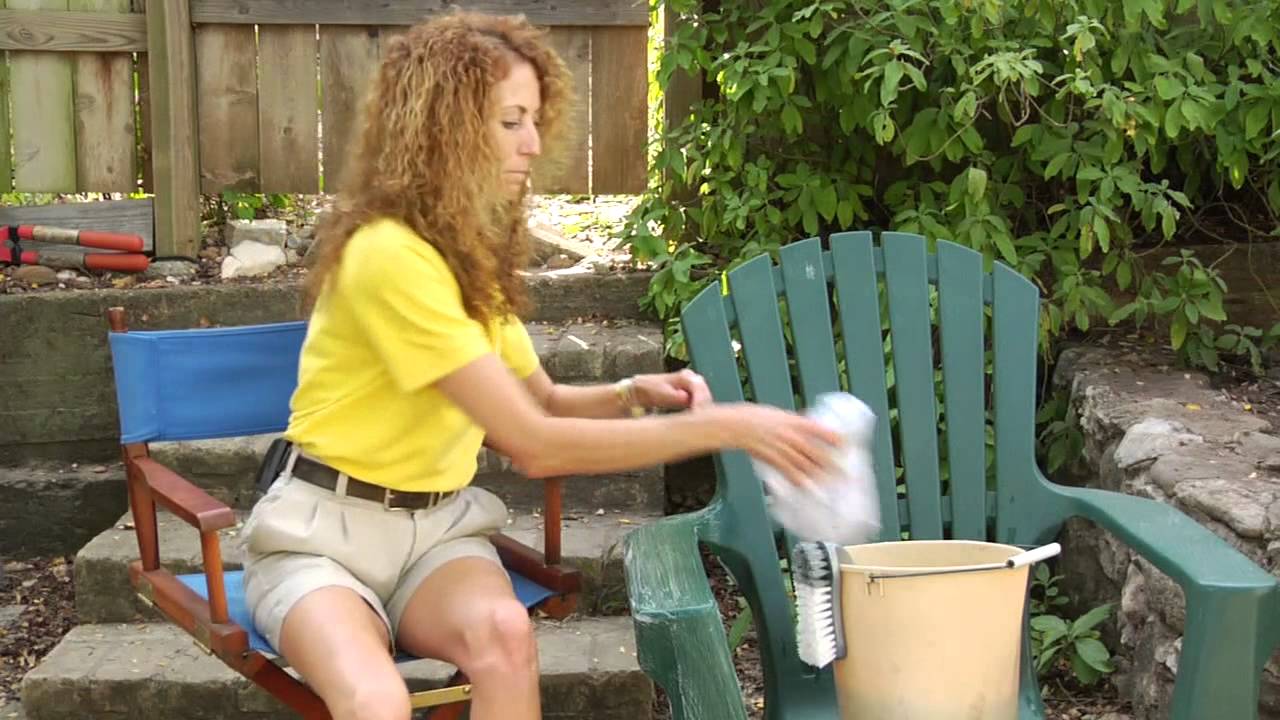
The Ultimate Guide to Cleaning Plastic Garden Furniture: Keep Your Outdoor Space Sparkling
Plastic garden furniture is a popular choice for outdoor spaces due to its affordability, durability, and weather resistance. However, even the most resilient plastic furniture can become dirty and stained over time, diminishing its aesthetic appeal. Regular cleaning plastic garden furniture is essential to maintain its appearance and prolong its lifespan. This comprehensive guide provides you with the knowledge and techniques needed to effectively clean your plastic garden furniture, ensuring it remains an inviting and enjoyable part of your outdoor living area.
Why Cleaning Plastic Garden Furniture Matters
Neglecting to clean your plastic garden furniture can lead to several problems. Dirt, grime, mildew, and algae can accumulate, creating unsightly stains and potentially damaging the surface of the plastic. Furthermore, bird droppings, tree sap, and other organic matter can leave stubborn marks that are difficult to remove if left unattended. Regular cleaning plastic garden furniture prevents these issues and keeps your outdoor furniture looking its best.
Benefits of Regular Cleaning
- Maintains Appearance: Regular cleaning keeps your furniture looking fresh and new, enhancing the overall aesthetic of your outdoor space.
- Prolongs Lifespan: Removing dirt and grime prevents damage and extends the life of your plastic furniture.
- Prevents Staining: Timely cleaning prevents stains from setting in, making them easier to remove.
- Hygienic Environment: Cleaning removes harmful bacteria and allergens, creating a healthier outdoor environment for you and your guests.
Essential Supplies for Cleaning Plastic Garden Furniture
Before you begin cleaning plastic garden furniture, gather the necessary supplies. Having everything on hand will make the process more efficient and effective. Here’s a list of essential items:
- Bucket: For mixing cleaning solutions.
- Mild Dish Soap: A gentle yet effective cleaning agent.
- Warm Water: To dissolve soap and loosen dirt.
- Soft-Bristled Brush: For scrubbing surfaces without scratching.
- Sponge or Cleaning Cloth: For wiping down furniture.
- Garden Hose: For rinsing off soap and debris.
- Optional: White vinegar, baking soda, bleach (use with caution), pressure washer.
- Protective Gear: Gloves and eye protection (especially when using bleach).
Step-by-Step Guide to Cleaning Plastic Garden Furniture
Follow these steps for effective cleaning plastic garden furniture:
Step 1: Preparation
Start by removing any loose debris, such as leaves, twigs, and dirt, from the furniture. You can use a brush, broom, or vacuum cleaner for this purpose. Move the furniture to an open area where you can easily rinse it with a garden hose.
Step 2: Mix Cleaning Solution
In a bucket, mix warm water with a few drops of mild dish soap. Avoid using harsh chemicals or abrasive cleaners, as they can damage the plastic surface. For tougher stains, you can add a cup of white vinegar to the solution.
Step 3: Apply Cleaning Solution
Dip a soft-bristled brush or sponge into the cleaning solution and apply it to the entire surface of the furniture. Pay special attention to areas with visible dirt, stains, or mildew. Allow the solution to sit for a few minutes to loosen stubborn grime.
Step 4: Scrub the Furniture
Using the brush or sponge, scrub the furniture in a circular motion. Apply gentle pressure to remove dirt and stains without scratching the plastic. For intricate designs or hard-to-reach areas, use a smaller brush or toothbrush.
Step 5: Rinse Thoroughly
Rinse the furniture thoroughly with a garden hose to remove all traces of soap and dirt. Ensure that no cleaning solution remains, as it can attract more dirt and leave a residue. [See also: How to Choose the Best Garden Hose]
Step 6: Dry the Furniture
Allow the furniture to air dry completely. You can also use a clean towel or cloth to wipe down the surfaces and speed up the drying process. Avoid placing the furniture in direct sunlight, as it can cause fading or discoloration.
Dealing with Stubborn Stains
Sometimes, regular cleaning may not be enough to remove stubborn stains from your plastic garden furniture. Here are some effective methods for tackling different types of stains:
Mildew and Mold
Mildew and mold can thrive in damp outdoor environments. To remove them, mix a solution of one part bleach to ten parts water. Apply the solution to the affected areas, let it sit for a few minutes, and then scrub with a brush. Rinse thoroughly and allow the furniture to dry completely. Caution: Always wear gloves and eye protection when using bleach.
Algae
Algae can create a green or black film on plastic furniture. A mixture of baking soda and water can effectively remove algae. Make a paste of baking soda and water, apply it to the affected areas, and let it sit for about 15 minutes. Then, scrub with a brush and rinse thoroughly.
Bird Droppings
Bird droppings can be acidic and corrosive. Remove them as soon as possible to prevent damage. Soak the affected area with warm water and dish soap, then gently scrub with a brush. Rinse thoroughly and dry.
Tree Sap
Tree sap can be sticky and difficult to remove. Try using rubbing alcohol or mineral spirits to dissolve the sap. Apply the solvent to a clean cloth and gently rub the affected area. Rinse thoroughly and dry.
Using a Pressure Washer for Cleaning Plastic Garden Furniture
A pressure washer can be an efficient tool for cleaning plastic garden furniture, but it should be used with caution. High pressure can damage the plastic surface, so it’s essential to use a low-pressure setting and a wide nozzle. Follow these steps:
- Test the pressure washer on an inconspicuous area of the furniture to ensure it doesn’t cause damage.
- Hold the nozzle at a distance of at least 12 inches from the furniture.
- Use a wide nozzle and a low-pressure setting.
- Move the nozzle in a sweeping motion to avoid concentrating the pressure in one area.
- Rinse the furniture thoroughly to remove all dirt and soap.
- Allow the furniture to dry completely.
Preventative Measures to Keep Your Furniture Clean
Prevention is always better than cure. Here are some preventative measures to help keep your plastic garden furniture clean and reduce the need for frequent cleaning plastic garden furniture:
- Cover Your Furniture: Use furniture covers when the furniture is not in use to protect it from dirt, rain, and sun.
- Regularly Wipe Down Surfaces: Wipe down the furniture with a damp cloth or sponge after each use to remove any spills or dirt.
- Store Furniture Indoors: During the off-season, store your plastic garden furniture indoors to protect it from harsh weather conditions.
- Trim Overhanging Branches: Trim any overhanging branches to prevent tree sap and bird droppings from falling on your furniture.
Choosing the Right Cleaning Products
When cleaning plastic garden furniture, it’s important to choose the right cleaning products. Avoid using harsh chemicals, abrasive cleaners, or scouring pads, as they can scratch or damage the plastic surface. Opt for mild dish soap, white vinegar, or baking soda. If you choose to use bleach, use it sparingly and always dilute it with water. Always test any cleaning product on an inconspicuous area of the furniture before applying it to the entire surface. [See also: Eco-Friendly Garden Cleaning Solutions]
Maintaining the Color of Your Plastic Garden Furniture
Over time, plastic garden furniture can fade or discolor due to exposure to sunlight and weather. To maintain the color, consider using a UV protectant spray. These sprays create a protective barrier that shields the plastic from harmful UV rays and prevents fading. Apply the spray according to the manufacturer’s instructions.
Conclusion
Cleaning plastic garden furniture is a simple yet essential task for maintaining the appearance and longevity of your outdoor furniture. By following the steps outlined in this guide and using the right cleaning products, you can keep your plastic furniture looking its best for years to come. Regular cleaning not only enhances the aesthetic appeal of your outdoor space but also creates a healthier and more enjoyable environment for you and your guests. So, grab your cleaning supplies and get ready to transform your plastic garden furniture into a sparkling oasis.

